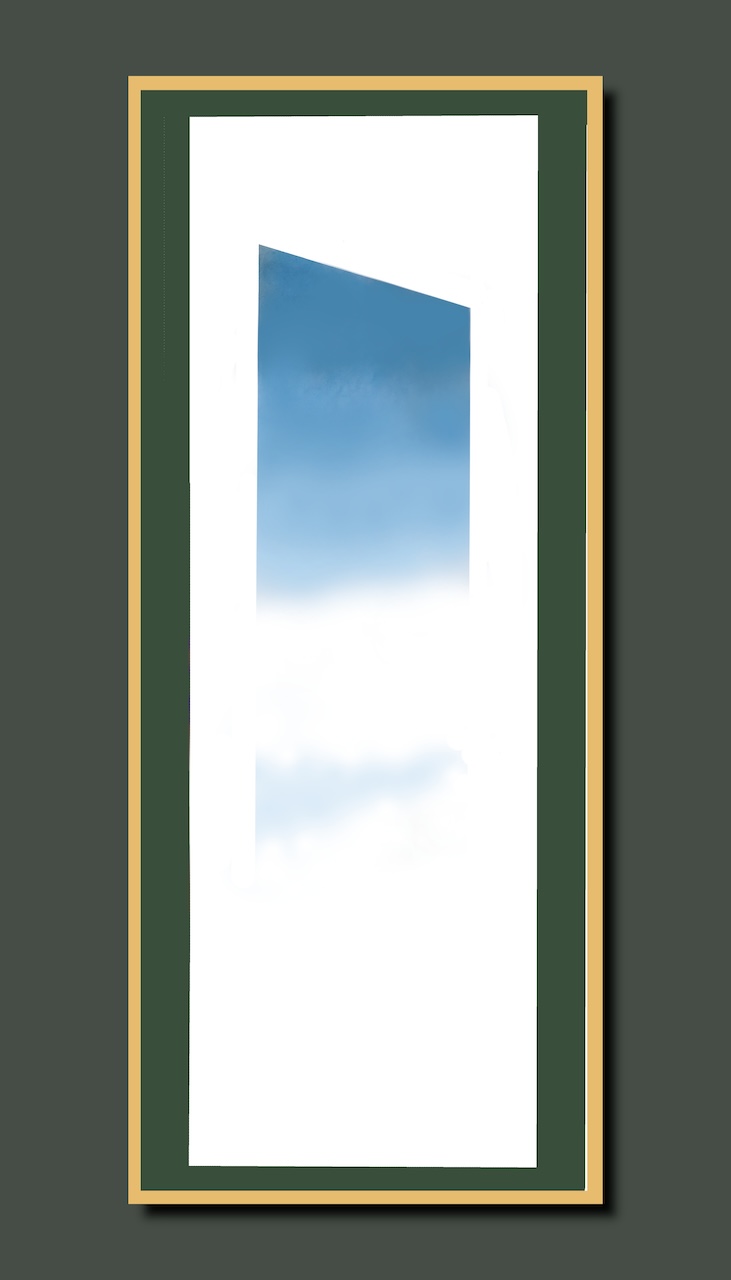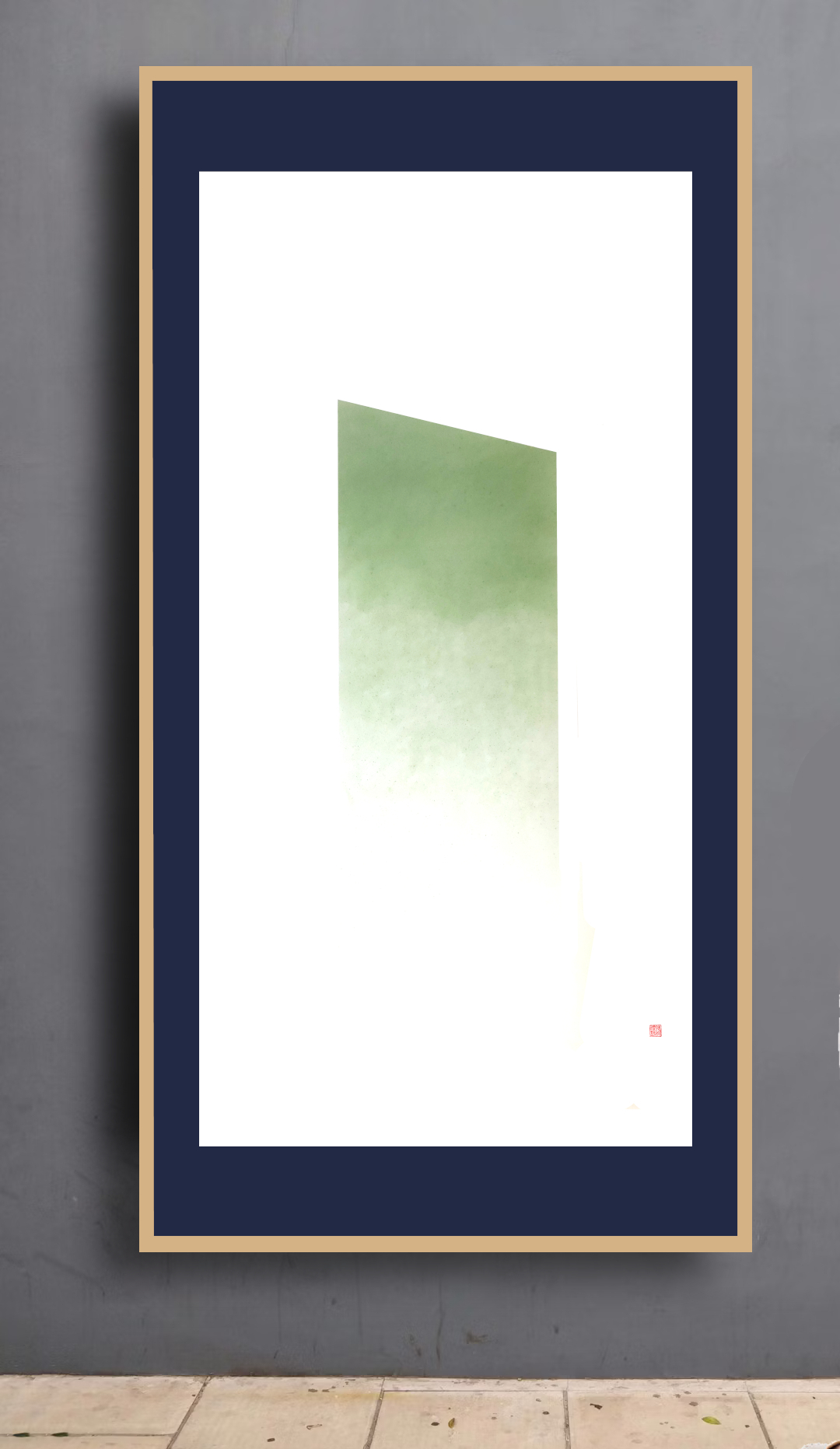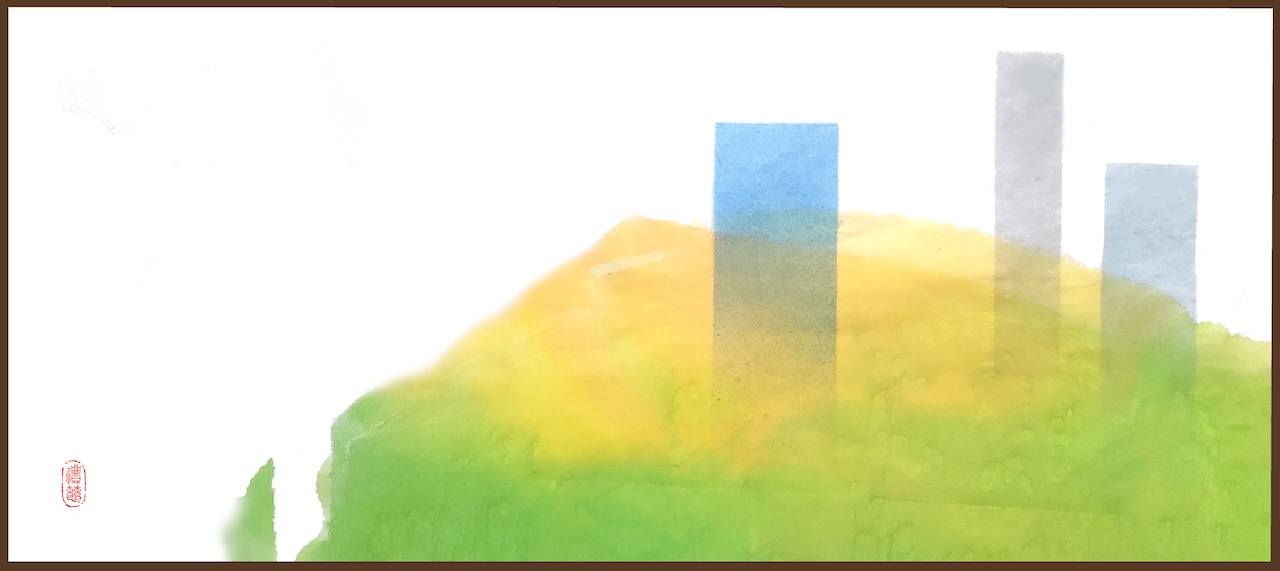”The Illusory, Real World (世路山河),” 97x176cm 2024. Image courtesy of Night Fung
I have much to thank for the recently opened Sun Museum in Hong Kong’s artsy neighborhood of Sai Ying Pun. Nearby is a fantastic boxing gym that caught my eye while I was attending the gallery’s opening. Sun Museum, which was set up as a non-profit museum by the Simon Suen Foundation, was previously located in an area called Kwun Tong, before relocating to the west of Hong Kong Island this year with a slightly updated interior design and curatorial layout. On display in its beautiful gallery are two of watercolor artist Night Fung’s (b. 1958) pieces, which showcases his technical skill in creating distinct shapes with watercolors. This has become somewhat of his signature aesthetic. “I’m fascinated by visual absence and try to communicate that feeling in many of my works,” he told me. “Often you can say more based on what’s not there, rather than what is shown.”
Fung and I bonded over coffee downstairs, in the lovely artisanal space offered to visitors needing a beans boost after enjoying Sun Museum. We talked a little bit about martial arts after I mentioned that I train at the boxing club just across from Sun Museum. It was not the only thing we had in common: Fung did an MA in Buddhist Studies at the Chinese University of Hong Kong, and has extensive knowledge of the Mahayana Buddhist texts. But his knowledge of Buddhism did not consciously bear on his current artistic inspiration. Over the years it simply came naturally, much like the atmosphere his Zen-style paintings convey: light, soothing, and exquisitely simple.
He shared a bit about his professional past: “I was a journalist and editor, and after I retired from doing that, I was looking to do something with my time. I really was an accidental artist,” he stresses, “and in relation to my art, my specialization was also accidental in the sense that my friends saw me as a Zen-style artist. I didn’t give myself this role; it was something that people thought I was doing.”
I would call it somewhat of a beautiful accident. As his social media profile began to catch the eyes of art lovers, and organizations began seeking him out for artistic commissions, he felt comfortable enough to deploy his skill with watercolor edges as his signature style.

His usual material of choice, rice paper, and painting with Chinese ink, come together to offer a contrast of colors that only occasionally involves black (and even the black, when painted, blends back into the white rice paper canvas). These contrasts are never jarring or visually unpleasant: they tease at our contemplative instincts, inviting us to engage with the colors as a visual representation of consciousness rather than cognitive, conceptual thought.

A peek at his Instagram profile, which is where he has shared his art for years, conveys his atmospheric art visually. A two-piece, portrait-oriented work called “A Clean and Untangled Mountain” (山色無非清淨) presents a sparse “dissolving” of an impressionist landscape into emptiness. Green and blue, naturalistic and comfortable colors, descend into silent white with nothing left to say or do. And his two pieces at Sun Museum combine a powerful impression of hues with patient and pointed use of white. “Reunion of Humanity and the Moon” (人月團圓) showcases his self-taught and excellent mechanical skill with a watercolor full moon partially obscured by a beautiful dark clouds with intricate, fluffy edges. And “Home” (家) is evocative for any Hongkonger or person that knows or loves the Asian metropolis. The art shows the verdant country parks and green mountainsides of Hong Kong embracing the skyscrapers of the city, which in this piece are secondary characters, more in the background rather than being the protagonists as usually depicted in so much photography and artwork.


As of late, Fung has continued to focus on refining his craft, to explore the interplay between the spectrum of colors and the white blankness that has become so integral to his compositions. “I think it is a real privilege to have been ‘bestowed’ a certain artistic profile by friends and followers,” he said with a smile. “Because I believe in the Dharma, because I think art can communicate certain spiritual ideas and teachings, I decided to embrace this artistic identity.” This embrace of others’ perceptions has served him well, and through his art, Fung now helps to deconstruct conceptions in a beautiful medley of watery, misty strokes and splashes.
See more
Night Fung Paintings (Instagram)
Related blog posts from BDG
The Sun Museum’s relocation: A new chapter and prospects for young artists
A Modern Vision of Ancient Aesthetics: Wong May Lee’s Celadons from Longquan Kilns


